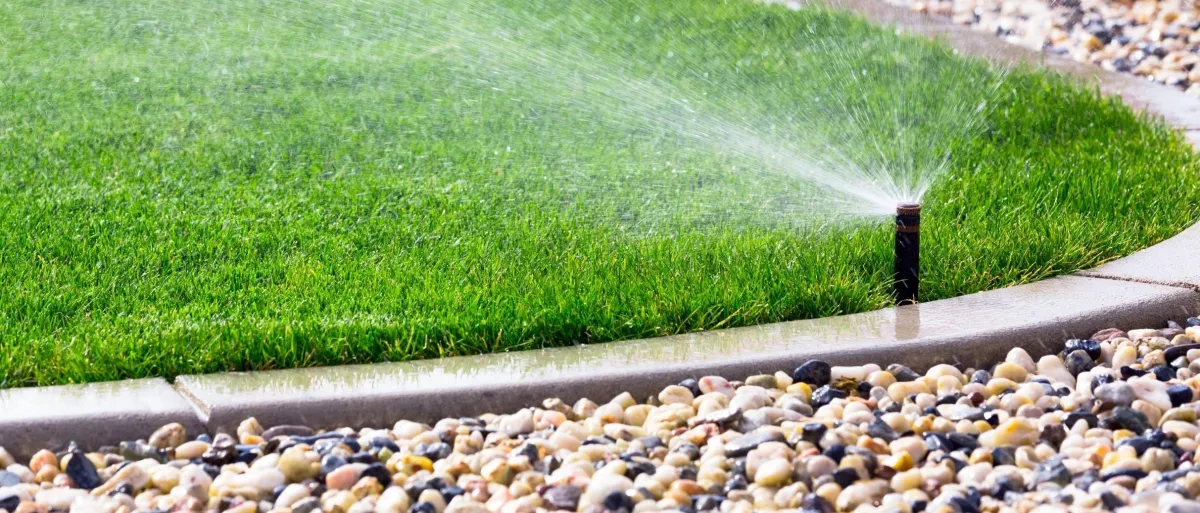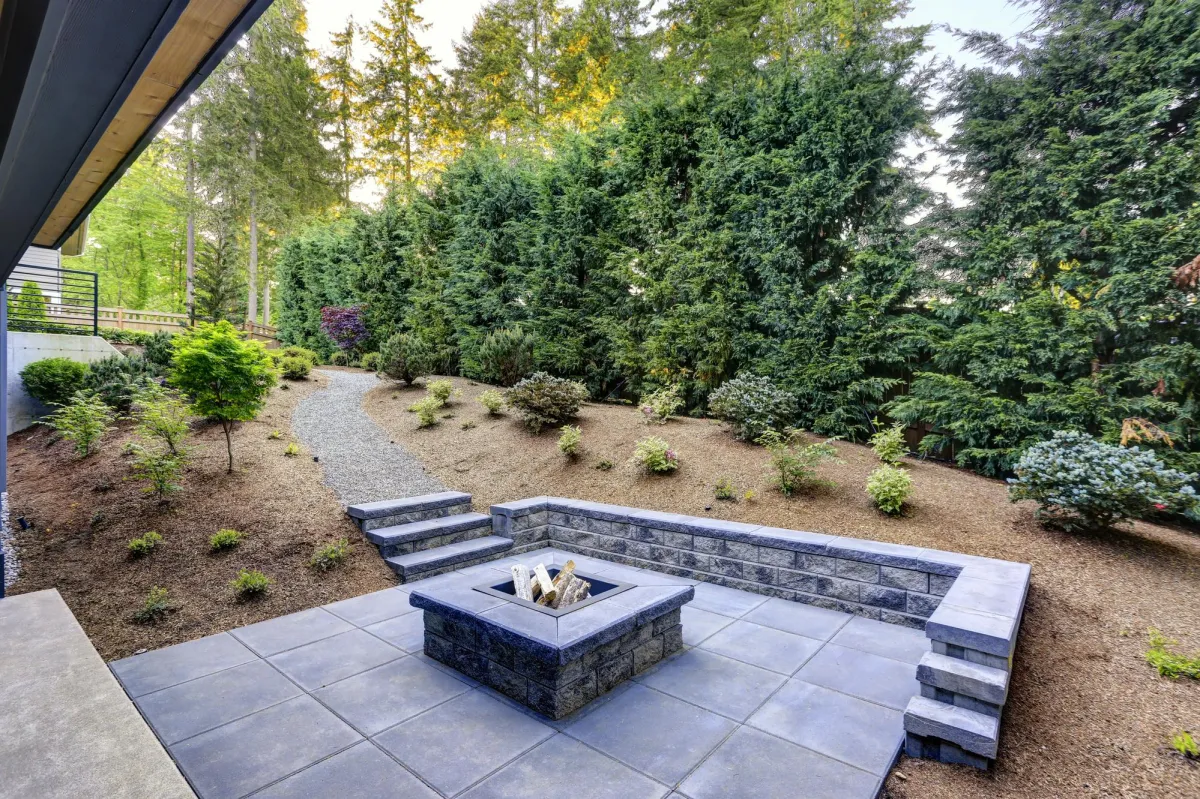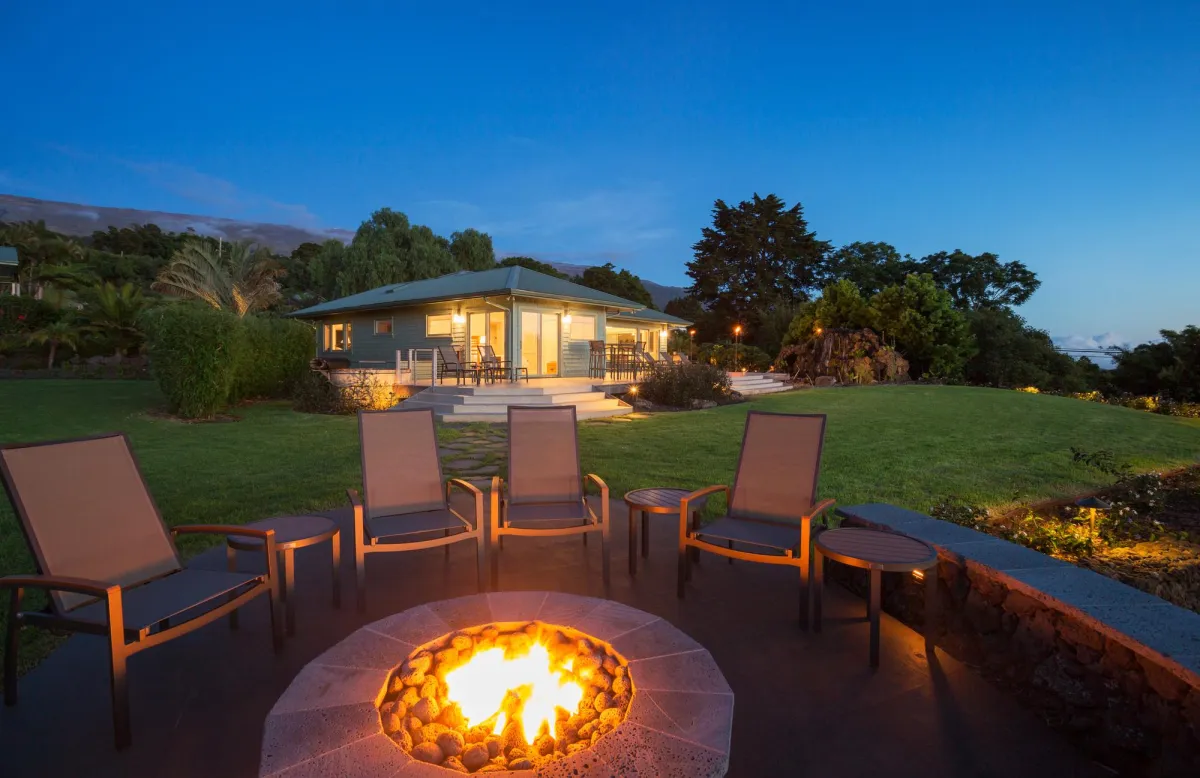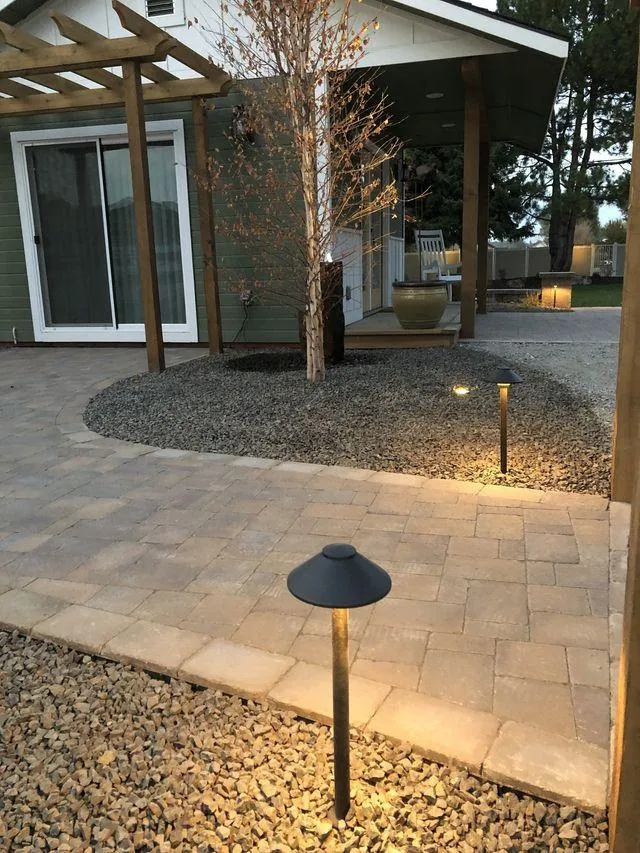Fire Pits
Adding a backyard fire pit will make it more enjoyable to spend time outside. They are great because they add to the atmosphere and make any gathering more fun. You can quickly make a temporary pit or take some time to build a structure that will last. Call Tucson Pavers and Patios for all your fire pit needs.
You can either buy a set of pavers made just for building a fire pit or let your imagination run wild and use regular pavers. For your paving projects, you can call Tucson Pavers to help you plan and build the most beautiful fire pit in your neighborhood.
Fire Pit Installation & Design
Concrete Fire Pit
Cast Iron Fire Pit
Metal Fire Pit
Brick Fire Pit
Fire Pits Provides Comfort & Warm Relaxation
It's essential to consider safety when building a fire pit. So, it is necessary to use the proper material for the foundation and frame. In general, fire pits are constructed from metal or ceramic because of their high resistance to high temperatures.
They are resistant to the high heat produced by a fire. Paver stone is an excellent choice for this. When used as a base or frame for a fire pit, paver stones offer exceptional heat resistance and durability, making them a perfect option for year-round outdoor use.
They may be found in a wide variety of sizes and forms, letting you find the perfect fit for your outdoor fire pit's design. In addition, pavers are low-priced and straightforward to set up; the average do-it-yourselfer can do the job in a day or two.
Whether it is a backyard fire fit or cement fire bowl, stones are the perfect choice of materials that provides peace and warm relaxation every use.
Best Fire Pit For Your Tucson, AZ Homes
Your needs and priorities will determine which fire pit is best. The top landscape designers and design/build teams will spend significant time in the planning stages gathering information about your needs and wants.
Here are some of the best fire pits for your backyard spaces.
Built-In Fire Pit
A built-in, permanent fire pit or even an outdoor fireplace is the first choice for large-scale outdoor living projects like outdoor kitchens, shade structures, pools, etc. With these additions, backyards can finally seem like a resort. On-site, custom-built fire pits can be as basic or elaborate as the setting requires. In one popular method, basic concrete blocks are used as the fire pit's foundation before being covered in a thick layer of natural stone or manufactured stone.
Pre-assembled Fire Pit
If you'd like to use natural gas rather than wood, the good news is that your fire pit can be used as soon as it arrives. Bricks, metal, or concrete blocks can all be used to make fire pits. Drawbacks include higher shipping prices and limited personalization options for the fire pit.
Free Standing Or Portable Fire Pit
Portable fire pits, particularly the smokeless variety, are a popular and practical way to bring outdoor warmth without breaking the bank. It is also great for outdoor camping, making it an outdoor bonfire pit. Some of the best portable fire pits include propane gas firepits and BioLite firepits.
Project Gallery
Our Recent Projects & Remodels




FAQs
Adding a pool to a professionally designed and installed outdoor living space can significantly boost the cost. It's a shame that winter shortens the return on investment for people in the Northeast and Midwest.
Extending the outdoor living season with a well-placed fire feature is an intelligent way to get your money's worth, especially considering how little that money actually costs. You may find the following frequently asked questions helpful if you plan to construct a fire feature in your backyard:
Where should I place my fire pit?
The ideal place for a fire pit should be 10 feet away from your house, storage shed, fence, or other building. Have at least 10–20 feet of clear space around your fire pit from walls or fences.
The generated heat can melt vinyl or wood siding when a fire pit is too close to a house. You also don't want to stress out about the potential for the fire in the fire pit to get out of hand and cause damage.
If the fire gets out of hand on a windy night, the area where you built or placed your fire pit should be open and free of trees, canopies, coverings, and anything else that could catch fire.
What is recommended fire-safe landscaping?
To help prevent wildfires, you should avoid growing flammable plants and trees like fir and pine.
Trees like maples, poplars, and cherries can be planted because they are less prone to catching fire than other coniferous trees.
To keep mulch piles from catching fire, you could soak dead leaves before raking under shade trees.
Is there a recommended BTU level for a fire pit?
The best amount of heat for a fire in a fire pit is indicated by the pit's BTU rating. These details are typically included in the product's manual. There should be 3600 BTUs between the fire pit and the outdoor grill. You should heat your grill to between 500 and 600 degrees Fahrenheit for the best results.
Can a fire pit be installed on a concrete patio?
Building a fire pit on concrete is possible, but it will be more challenging. Pre-cast landscaping bricks or similar pavers are ideal for laying the foundation for a fire pit in a concrete patio.
Each brick should be roughly 2 inches bigger in diameter than the burner you want to use in the fire pit; this will prevent the stone from cracking.
Install the landscape fabric over the bricks and then fill the rest of the space with sand or gravel.
What should fire pits offer?
An outdoor space can be made cozier and more welcoming with the addition of a fire pit. Having a fire pit means enjoying the outdoors with your loved ones, even if it's cloudy or rainy.
Will a broad and deep clay pot work as a fire pit?
Whether or not the fire pit you selected is large enough can be determined in several ways. Think about how much of your patio you want the fire pit to take up before you buy one.
Second, is there a nearby ceiling vent? In the absence of such an option, pick one that only produces a little smoke.
To sum up, take some measurements on a hot day before purchasing to determine how long it takes for your patio to reach that temperature.
Where do individuals typically go wrong with fire pits?
Decorative fire pits are popular additions to patios and decks. These can also be found indoors, but the most natural setting is outdoors.
But, there are a few basic pitfalls that many people fall into while arranging their fire pits. One standard error is underestimating the fuel you'll need for the fire pit, leading to a crisis just before the big event.
Not considering the weather, not providing sufficient ventilation, and having a dangerous area surrounding the fire pit are standard errors.
In addition, if you are close to any forest, you should install a spark screen.
Can you burn trash in your yard, or it violates any laws?
The rules in your area may vary from state to state. It would be best to consider whether your fire pit requires a permit.
Backyard fire pits are generally allowed if they are not utilized indoors or in a structure with a combustible ceiling. Backyard fire pits may be legal in some jurisdictions with the proper licenses.
A campfire in one of these is a beautiful method to get some heat while it's cold outside.
Why Invest On Pavers Around Your Pool Edges
Pool deck pavers that are used to landscape around outdoor pools can be good for both the people who own the pools and the people who use them. The main things used to make these pool pavers are stone, brick, and concrete. These are the best things to use as pool paving because they can stand up to the harsh effects of chlorine - based or saltwater pools.
Safety is one thing that pool pavers offer. Pool deck pavers are used to give the pool area the look and feel you want in terms of texture and color. These pool pavers are also resistant to wear and have a non-slip surface that will last for a long time. Safety is important because kids like to play and run around on surfaces that are wet and slippery.
Pool pavers are cheap and can be used instead of pool pavers made of natural stone. One can save a lot of money, especially if the pool pavers are put in place without using mortar. These pavers also last a long time. But if you have a pool with salt water, you need to be careful to choose the right pavers. One only needs to ask the company that made it for advice.
Pool deck pavers are also strong enough to stand up to the effects of saltwater and splashes of water. They are also easy to put in place, especially if you don't need to use mortar. DIY fans will also find it easy to figure out how to put these pavers down.

Privacy Policy | Terms & Conditions | Disclosure
NAVIGATION
SERVICES
WORKING HOURS
Mon - Wed 9:00 am - 9:00 pm
Thu - Sat 9:00 am - 7:00 pm
Sunday 9:00 am - 2:30 am